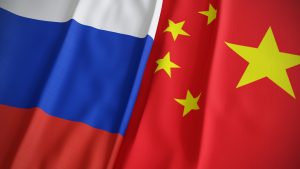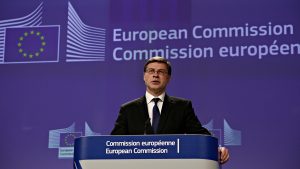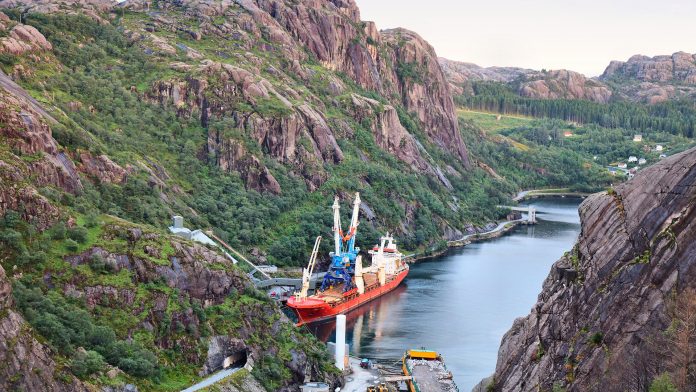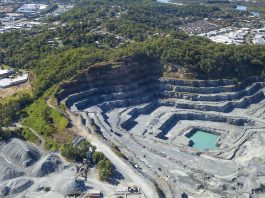With Norway revealing its plan for increased mining of critical raw materials, The Innovation Platform examines the Norwegian Mineral Strategy and what it will mean for Norway’s economic future.
In 2021, Norway was revealed to be the location of another large deposit of critical raw materials (CRM),1 as 240 million MT of phosphate, vanadium, and titanium were estimated to be in Storeknuten. This would already be a vast resource of three of the 30 critical raw materials, but since then has been shown by drilling operations to be as much as 910 million MT. The global economy, industry, and the current state of world politics mean that Norway has been presented with an opportunity to take a more prominent role in supplying much of the world’s industrial innovations. This includes the EU and the US, and stands to give Norway a lot more political and economic power in the coming years via developing green industries, increasing exports and growing the number of jobs in the Norwegian industry.
As the name suggests, the EU defines critical raw materials as materials that are critical to industry. Generally speaking, this includes metals and minerals that cannot be replaced by a more common material, that have a significant supply risk, and if there is a disruption of supply, will have economic consequences. For Norway, this will include aluminium, copper, cobalt, zinc, and much more. With the EU moving towards less dependence on China, Russia and other countries for importing, Norway has become a key player in supplying these materials.
CRM in Europe
The shift towards greater production of CRMs comes from a variety of factors, and the EU plan, known as the Critical Raw Materials Act, has a number of objectives. This act, introduced in March 2023, seeks to strengthen the EU’s CRM capacity, reduce dependency, increase preparedness, and promote supply chain sustainability and circularity.2 The reduction of dependency essentially means the diversification of Europe’s supply of materials. Ideally, no more than 65% of one critical material is to be imported from one source. This would lead to several advantages, including the facilitation of manufacturing more green energy solutions, as well as the political advantages of not relying too much on one country’s source. With political tensions in China and the war in Ukraine with Russia, this would be a significant development for the EU and is a key cause of the Critical Raw Materials Act’s existence.
Similarly, and since Norway is not an EU Member State, Norway has its own Green Industrial Initiative. This roadmap aims to increase investment and create jobs within green industries, as well as cutting pollution as it turns towards low-to-no emissions. Vital to this are critical metals and materials. Norway currently has a lot of these materials for not only themselves but also Europe.

China and Russia occupy a dominating position in supplying many CRMs — the EU is seeking to change that
The Norwegian Mineral Strategy
As such, Norway has had to change its strategy in terms of mining and processing these materials in order to keep up with the demand from the EU and themselves. In June, the Norwegian government unveiled the Norwegian Mineral Strategy. This strategy is a five-pillar process that aims to improve the Norwegian mineral industry and is a first step towards ‘the world’s most sustainable mineral industry.’3 Within this strategy are five key areas of focus.
Faster implementation of mineral projects
This is primarily concerned with the mapping of critical raw materials as well as reducing the time taken to process the mined materials. Obviously, this will reduce the time from mining the material or mineral to using it or exporting it for use, which in turn will reduce the time taken to develop green industries and grow profit for the economy.
The mineral industry must contribute to the circular economy
A circular economy is designed to minimise both the materials put in as well as the waste materials or pollution outputted. Norway’s circular economy is relatively low at 2.4% as of writing this, so an increase would be beneficial for green plans as well as profits. This will also decrease the cost of construction as material is recycled for use.
A more sustainable mineral industry
Similar to many countries and companies, Norway is aiming for its mineral industry to be zero emission or net zero by 2030. This will also specifically target the use of non-environmentally friendly chemicals in manufacturing processes. This will not only develop new industries as methods and constructions need to be updated or replaced, and therefore create new jobs, it will also benefit the planet and make the industry as a whole much more appealing to people conscious of the effects of industry on the planet.
Private capital is a must
Private capital will be key to funding these endeavours. Furthermore, all options will be explored to increase the profitability of mineral mining and processing, as well as increase the opportunities for communities, i.e. creating jobs. Altogether this aims to greatly stimulate the Norwegian economy.
Norway will continue to supply international partnerships with green value chains
This new strategy aims to change Norway’s global image to being a mineral nation and to further strengthen the ties between Norway and the rest of Europe in terms of trading critical materials. The mining industry has frequently overlooked value chains, leading to wasted resources and isolated operations, leading to miscommunication and bogged-down production.
These five points constitute the Norwegian Mineral Strategy and are an excellent vision of Norway’s hope for its future in mining and processing critical raw materials. With these coming to fruition, Norway will occupy a spot of increasing power on the world stage.
Europe’s position and Norway’s future
As mentioned earlier, Europe currently has a tenuous relationship with China. The political issues in China under EU criticism range from the mistreatment of Uighur Muslims to China’s continued alliance with Russia after their invasion and sustained war in Ukraine. Yet, China is currently able to mine two-thirds of the 30 raw materials, giving them a dominating position in industrial endeavours.

The EU’s Critical Raw Material Act aims to increase their ability to acquire CRM as well as plan for shortages
Similarly, Russia was a very contentious country even before the invasion of Ukraine, and most of Europe is on edge regarding a future with Russia. Still, Russia is in the top three countries for mining critical raw materials, with China at the top and the US between them. The EU being strong allies with just one of these three is a weak position, and one that they have started looking to rectify in recent years. Norway has an abundance of these materials and so it is easy to see how this will not only benefit the EU but Europe as a whole and especially Norway. With the EU diversifying their sources of critical raw materials, Norway stands to profit greatly from exporting to Europe, as well as its own industry developing both in economic terms and green industrial terms.
All of these factors, along with the new Norwegian Mineral Strategy, mean that Norway may well be catapulted up in the ranks of top critical raw material exporters, and Norway itself will only benefit from this in profit and political power. The benefits to industry will also give the country a swathe of new jobs and the ability to develop green solutions and industries to benefit the world and humanity as a whole.
References
- Huge increase in world-class deposit of EU Critical Raw Materials – Norge Mining, John Vergopoulos, CEO of Norge Mining, 11/02/2022, last accessed at 09:32 23/08/23
- European Critical Raw Materials Act (europa.eu)
- Jan Christian Vestre, Norwegian Minister of Trade and Industry, – Norway will develop the world’s most sustainable mineral industry – regjeringen.no, 06/07/2023, last accessed at 09:59 23/08/2023
Please note, this article will also appear in the fifteenth edition of our quarterly publication.









